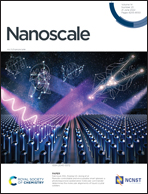A detailed study of ion transport through the SARS-CoV-2 E protein ion channel
Abstract
The envelope (E) protein encoded in the genome of an RNA virus is crucial for the replication, budding and pathophysiology of the virus. In the light of the ongoing pandemic, we explored similarities/differences between SARS-CoV-1 and SARS-CoV-2 E protein ion channels in terms of their selectivity. Further, we also examined the impact of variation of the bath concentration and introduction of potential and concentration gradients across the channel on the binding ratios of sodium and chloride ions for the SARS-CoV-2 E protein. Ion transport is described through the fourth-order Poisson–Nernst–Planck–Bikerman (4PNPBik) model which generalizes the traditional model by including ionic interactions between ions and their surrounding medium and non-ionic interactions between particles due to their finite size. Governing equations are solved numerically using the immersed boundary-lattice Boltzmann method (IB-LBM). The mathematical model has been validated by comparing analytical and experimental ion activity. The SARS-CoV-1 E protein ion channel is found to be more permeable to cationic ions, while the SARS-CoV-2 E protein has similar selectivity for both cationic and anionic species. For SARS-CoV-2, an increase in the bath concentration results in an increase in the binding ratio for sodium ions. Furthermore, the chloride binding ratio increases as the concentration gradient increases. A potential gradient has a minimal effect on the binding ratio. The SARS-CoV-2 E protein was found to support higher ionic currents than the SARS-CoV-1 E protein. Furthermore, the ionic current increased with increasing bath concentrations.



 Please wait while we load your content...
Please wait while we load your content...